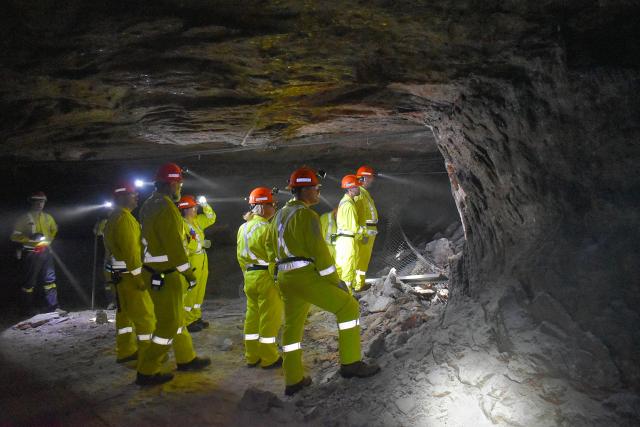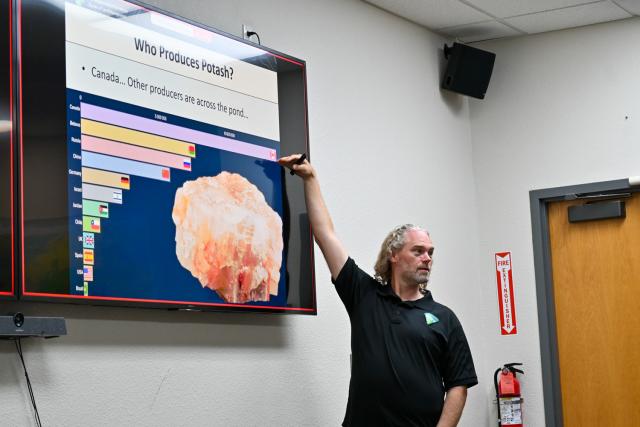Leasable Minerals, Potash
Potash refers to various compounds that contain water-soluble potassium. Approximately 85% of potash produced in the United States is used in fertilizers, while the rest is utilized in the chemical industry to make products like animal feed, water softeners, food items, soaps, deicing agents, batteries, drilling fluids, and pharmaceuticals. Without potash, U.S. food production could drop by about half within just a few years.
The term "potash" comes from "pot ash," which refers to the process of soaking wood or plant ashes in water to extract potassium carbonate, the traditional method for producing potash before industrial manufacturing. This solution was then evaporated in large iron pots, leaving a white residue known as pot ash. The first U.S. patent (Patent No.1), signed by President George Washington on July 31, 1790, was for an improvement in potash manufacture which was the first chemical industry in the United States.
In New Mexico, two potash minerals are mined: sylvite (potassium chloride) and langbeinite (potassium-magnesium sulfate). These minerals are extracted from two underground mines and one solution mine under federal potassium leases in southeastern New Mexico. Together, they produce around 280,000 short tons of potash, accounting for more than half of the U.S. potash production, with a wholesale value of $1.22 billion in 2024 (https://pubs.usgs.gov/periodicals/mcs2025/mcs2025-potash.pdf).
In 2020, potash mining created approximately 750 jobs in rural New Mexico. Since then, an average of $5.8 million in federal potassium lease revenue has been shared with the state each year.
Secretary of the Interior Order 3324, issued on December 4, 2012, established drilling islands and development areas within a designated 777-square-mile potash region. This approach aims to balance the extraction of valuable potash resources that sit above important oil and gas reserves in the United States.
The Office of Natural Resources Revenue database shows that the average potassium lease revenue for New Mexico from 2020 to 2024 was $12,043,946. Of this amount, 50% is shared with the state after subtracting 2% for administrative fees.
In 2024, global potash production was led by Canada (31%), Russia (19%), Belarus (15%), and China (13%). The United States imported 93% of its potash requirements (https://pubs.usgs.gov/periodicals/mcs2025/mcs2025-potash.pdf).


